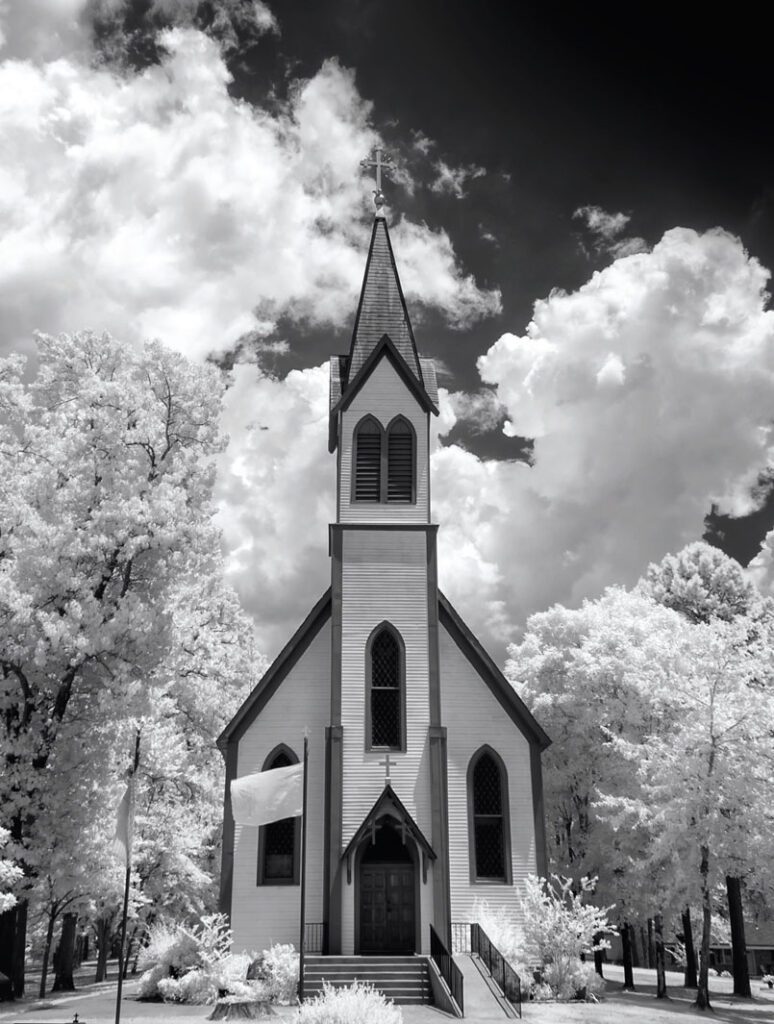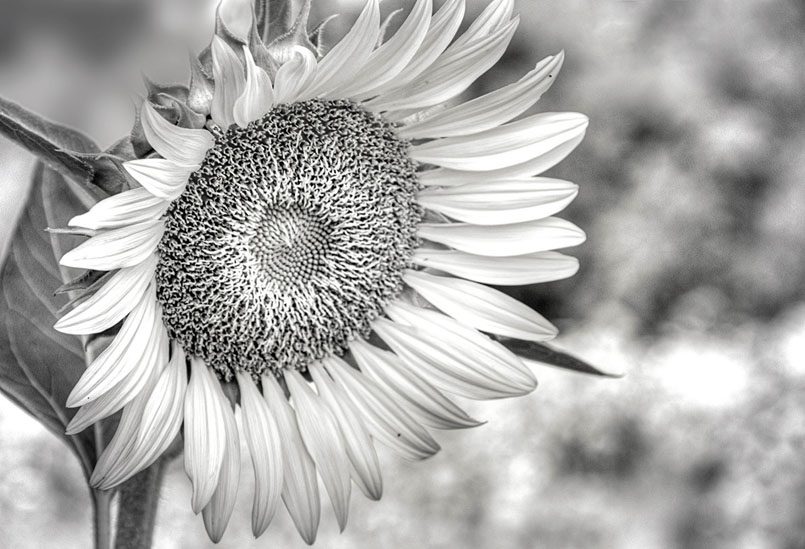02 Sep 2021 The Unseen Light of the 501
Story and photos by Linda Henderson
I have an interest in an unusual form of photography. It is infrared photography. If you are old enough to remember Life Magazine, then you may remember the outstanding black and white images that were in that magazine. Most likely, many of the photos that really stood out to you were infrared.

Infrared images are easily recognized by their radiant white trees and jet-black skies, or by an unreal color cast. Plants and trees reflect infrared light, making them appear to glow, while water and skies reflect extraordinarily little infrared light. The sky and water will appear very dark in an infrared photo; clouds, however, do absorb the infrared light, so they appear very white.
Infrared (IR) light surrounds us. Human eyes lack the ability to see this light. The visible spectrum that humans can see is in the wavelength of 400 nanometers to 700 nanometers. This narrow band of light enables us to see violet, blue, green, yellow, orange, and red light. Light waves less than 400 are ultraviolet light, waves greater than 700 are infrared light and not seen by the human eye. The source of infrared light is the sun.
My interest in this form of photography started many years ago when I was introduced to it in my high school photography class. Then, all that was required for this type of photography was a camera, infrared film, and a lens that adapted to the light. IR film was extremely hard to shoot, process, and develop. It almost ruined my grade in that class. I chose infrared film as my final assignment. Not one of my photos turned out, but because I was willing to try a difficult project, my teacher gave me a passing score. I learned a life lesson from that project: Choosing the hard option may not always end in success, but the experience may be the success.

Infrared film is no longer commercially available, but with modern cameras, it is possible to shoot infrared images with either a special filter over the lens or by having a camera modified or converted to capture light greater than 700 nanometers. A few years ago, I had a camera converted to IR so that I could see and capture that unseen light.
Choosing the right subject is important with this kind of photography. For the best results with IR, it is best to remember that if it is alive, it will reflect IR light. If it is non-living, it will absorb IR light. Foliage and trees will give infrared’s trademark white glow. Bright sunlight is not required, but high contrast will render the best black and white infrared photographs. The best time to shoot IR is in the summer. The spring/summer seasons provide more greenery and ensure there is plenty of chlorophyll in the leaves. Shooting greenery with something man-made like stonework or weathered wood will provide a beautiful image.

This style of photography is not for everyone, and I am definitely not an expert in IR, but I am enjoying seeing the 501 in an unseen light and producing photos that few are creating.
- Landscapes of liberty - June 30, 2024
- Getting the shot of a lifetime - February 1, 2024
- The road to Gothic Mountain - October 9, 2023








